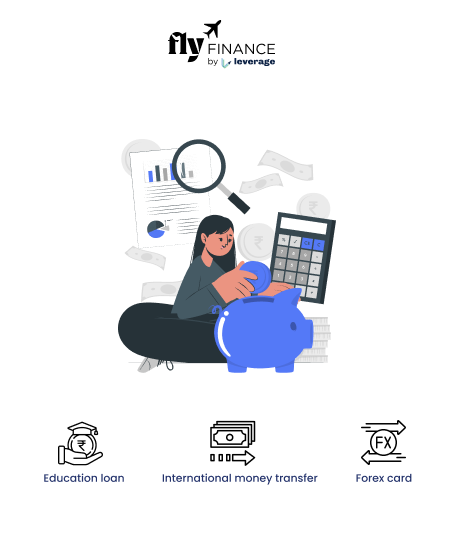The Federal Family Education Loan Program (FFELP) provides a viable option for international students seeking financial assistance. International students can start on an educational adventure that not only broadens their horizons but also improves their future prospects by judiciously using these loans.
FFELP loans provide borrowers with a range of repayment alternatives, including conventional, extended, graduated, and income-driven plans, so they can select a plan that works with their financial situation. In this blog post, we will explore FFELP loans and their significance in helping international students fulfil their dreams of studying abroad.
Table of contents
What are FFELP Loans?
The Federal Family Education Loan Program (FFELP) is a government initiative designed to provide financial aid to students pursuing higher education. It was established to supplement federal aid programs. Also, it is administered by private lenders such as banks, credit unions, and other financial institutions.
FFELP Loans are different from Direct Plus Loans. FFELP loans are an excellent source of financial support for overseas students who want to pursue an international education. It is crucial for overseas students to research the exact eligibility requirements and standards established by the lenders and confirm that the academic institution of their choice is an FFELP participant.
Full Form of FFELP
The full form of FFELP is Federal Family Education Loan Program. FFELP loans offer several advantages to international students, including lower interest rates compared to private loans, flexible repayment options, and deferment possibilities during periods of financial hardship.
Studying abroad can bean enriching experience that offers students the opportunity to immerse themselves. Even in a different culture, gain a global perspective, and acquire valuable skills. However, financing an international education can be a daunting task, especially for international students. This is where Federal Family Education Loan Program, abbreviated as FFELP, comes as the saviour of the aspirants.
HERE’S HOW YOU CAN GET AN EDUCATION LOAN TO STUDY ABROAD WITHOUT PARENTAL INCOME!
Eligibility Criteria for FFELP Loans
The eligibility criteria for FFELP loans depends on following factors:
- Citizenship and Residency Requirements
- Enrollment and Accreditation
Citizenship and Residency Requirements
While FFELP loans are primarily available to U.S. citizens and permanent residents. Also, certain categories of international students may also be eligible. Non-U.S. citizens who possess an eligible non-citizen status, such as refugees, asylees, or individuals with approved Deferred Action for Childhood Arrivals (DACA) status, may qualify for FFELP loans.
Enrollment and Accreditation
To be eligible for FFELP loans, international students must be enrolled in an eligible institution that participates in the program. It is essential to ensure that the chosen educational institution is accredited by a recognized accrediting agency to meet FFELP loan requirements.
FFELP Loan Application Process
The aplication process for the FFELP loans consisit of the following steps:
- Step 1: Completing the Free Application for Federal Student Aid (FAFSA)
- Step 2: Selecting a Lender
- Step 3: Submitting Loan Application Documents
Completing the Free Application for Federal Student Aid (FAFSA)
International students seeking FFELP loans must complete the free application for Federal student aid (FAFSA). Although international students are not eligible for federal grants, scholarships, or work-study programs, filling out the FAFSA is crucial for demonstrating financial need and determining loan eligibility.
Selecting a Lender
After completing the FAFSA, international students should research and select a lender that offers FFELP loans. It is advisable to compare interest rates, repayment terms, and borrower benefits offered by different lenders to find the most suitable option.
Submitting Loan Application Documents
Once a lender has been chosen, international students need to submit the necessary loan application documents, which typically include proof of enrollment, financial documents, and any additional information requested by the lender.
Repayment and Post-Graduation Considerations
Repayment of FFELP loans normally starts within a predetermined grace period after graduation or when students no longer attend at least half-time. Before starting payments, the grace period gives borrowers time to locate work and stabilise their finances.
Loan Consolidation
Consolidating FFELP loans can make sense for international students because it reduces the number of loans to one and streamlines the repayment procedure. Consolidation may also provide the opportunity to lower monthly payments and extend the payback time.
Loan Forgiveness and Deferment
International students may be eligible for loan forgiveness or deferment alternatives in specific situations like Government Service Loans.
Borrowers who are employed in certain public service occupations are eligible for loan forgiveness(PSLF), while those who are struggling financially or who wish to complete their education may be given the option of deferment.
Also Read: EDUCATION LOAN SANCTION LETTER: WHAT DOES IT MEAN AND HOW DO YOU GET ONE?
These loans offer the support required to pursue higher education and realise aspirations through lower interest rates, flexible repayment options, and the chance to build credit. However, it is crucial for overseas students to fully comprehend the FFELP loan eligibility requirements, application procedure, and payback considerations.
FAQs
International students may, in some cases, be eligible for FFELP loans. FFELP loans may be available to non-citizens with accepted non-citizen statuses, such as refugees, asylees, or people with Deferred Action for Childhood Arrivals (DACA) status.
International students must complete the Free Application for Federal Student Aid (FAFSA) in order to apply for FFELP loans. Filling out the FAFSA is essential for proving financial need and calculating loan eligibility, even if international students are not eligible for government grants, scholarships, or work-study programmes. International students should look into and choose a lender that offers FFELP loans after completing the FAFSA. They should then send the requisite loan application materials, such as enrollment documentation and financial data, to the lender.
Repayment of FFELP loans normally starts after graduation or when students are no longer enrolled at least half-time within a predetermined grace period. International students have a variety of repayment choices to select from, such as graduated, extended, standard, or income-driven programmes. With these alternatives, borrowers can pick a repayment strategy that fits their financial situation. Additionally, international students might think about consolidating their debt into a single loan, which would make loan repayment easier and possibly result in cheaper monthly payments. International students may occasionally qualify for loan forgiveness or deferment alternatives based on things like working in approved public service jobs or going through financial difficulty. To effectively manage their FFELP loan commitments, overseas students must fully comprehend and investigate their repayment choices.
To know more about the loan application process, and the best bank accounts for students or international money transfers, subscribe to Fly. Finance or reach out to our experts to help ease your study abroad experience.





























